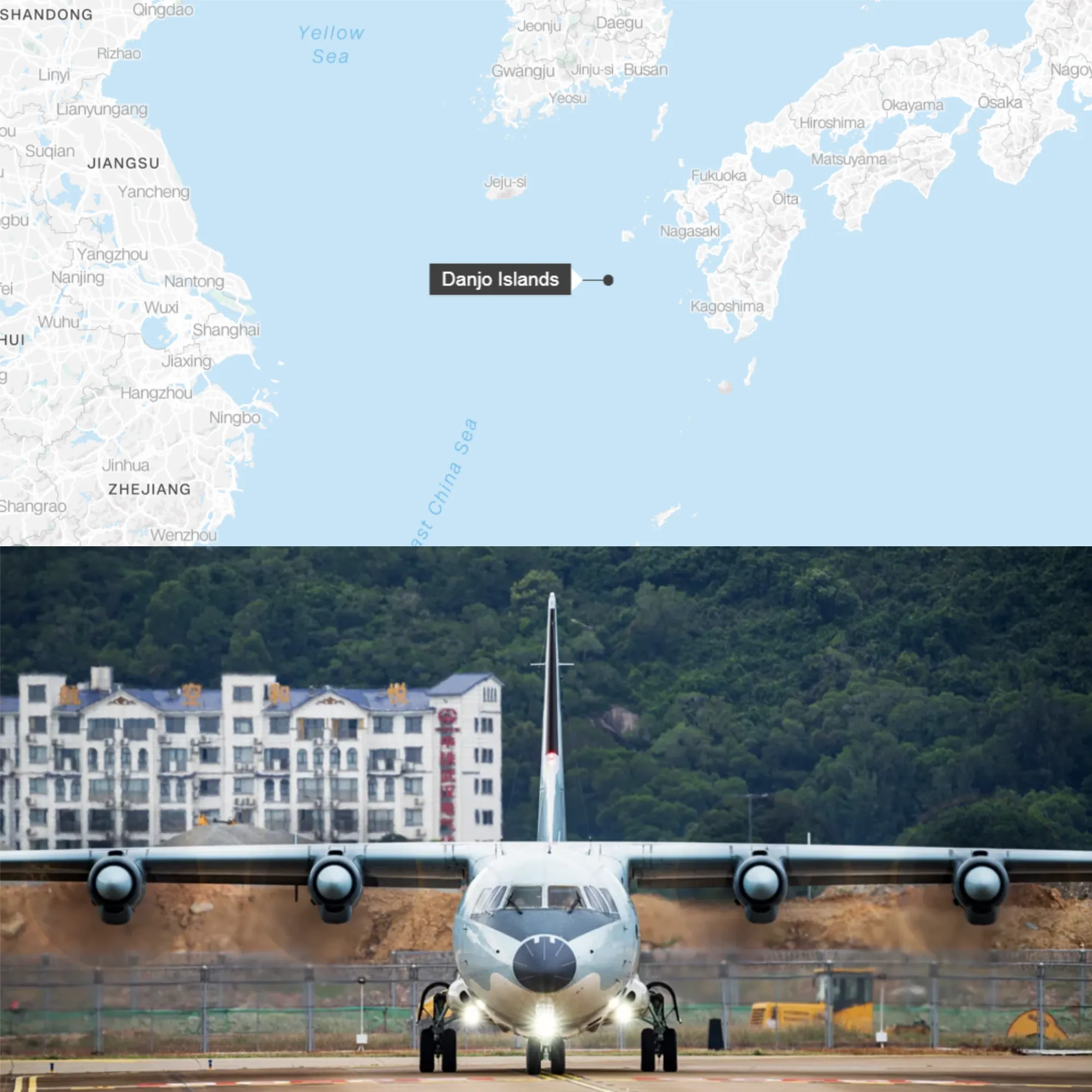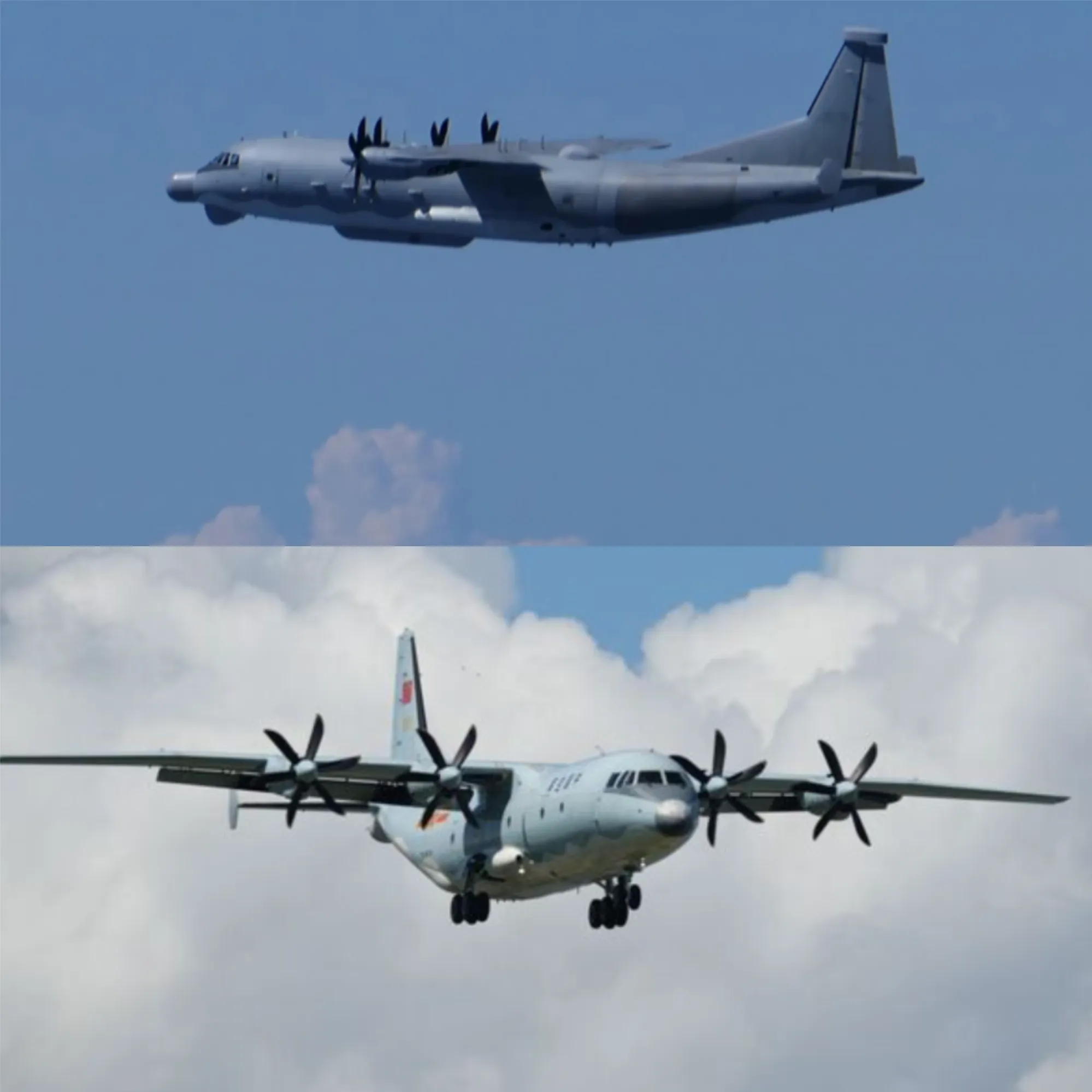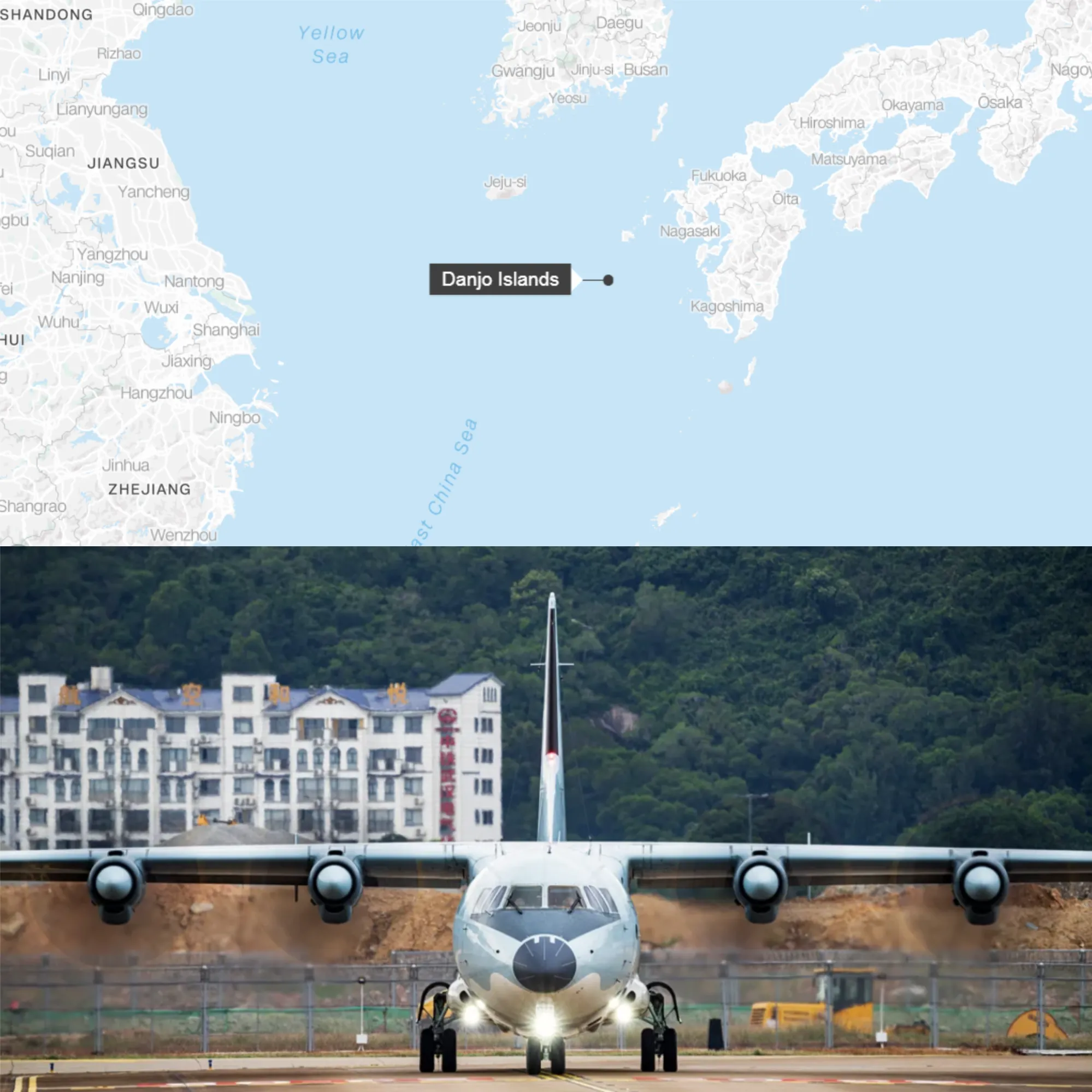
Chinese Military Aircraft Violates Japanese Airspace, Escalating Tensions

Japan has accused China of breaching its territorial airspace for the first time, marking a significant escalation in the already tense relations between the two nations. On Monday, a Chinese Y-9 reconnaissance aircraft reportedly entered Japanese airspace over the East China Sea, near the remote Danjo Islands. This incident has heightened concerns over the increasing military activities in the region.
According to Japan’s Defense Ministry, the Chinese military plane was observed flying in a rectangular pattern near the eastern side of the Danjo Islands. During its flight, the aircraft briefly veered westward, crossing into Japanese territorial airspace—defined as 12 nautical miles from the coastline—for approximately two minutes. In response, Japan scrambled fighter jets from the Air Self-Defense Force, although no direct confrontation occurred.
Japan’s Foreign Ministry took immediate diplomatic action, summoning Shi Yong, the chargé d’affaires of the Chinese Embassy in Tokyo, to lodge a formal protest. The ministry demanded that China take measures to prevent future violations, emphasizing the severity of the situation.
The alleged airspace violation is particularly concerning given the frequency of Chinese military aircraft approaching Japanese territory. In the past fiscal year alone, Japan scrambled fighter jets 479 times in response to such activities, highlighting the persistent tension in the region.

Japan’s Chief Cabinet Secretary, Yoshimasa Hayashi, addressed the issue at a press conference, stating, “The invasion of our country’s airspace by Chinese military aircraft is not only a serious violation of our country’s sovereignty but also a threat to our safety, and is completely unacceptable.”
The Danjo Islands, a Japanese national monument and wildlife protection area, are located about 100 miles southwest of Nagasaki. While this marks the first reported instance of a Chinese military aircraft violating Japanese airspace, similar incursions have occurred in the past near the disputed Senkaku Islands, which are claimed by both Japan and China.
The Senkaku Islands have long been a flashpoint in Sino-Japanese relations, with both nations asserting sovereignty over the territory. The situation is further complicated by Japan’s mutual defense treaty with the United States, which covers the Senkakus. Any incident in this region risks escalating into a broader conflict, making this latest airspace violation particularly alarming.
As tensions continue to rise, the international community watches closely, aware that the stakes in this geopolitical struggle are higher than ever. Japan has made it clear that it will not tolerate such breaches of its sovereignty, setting the stage for potential further confrontations in the future.





